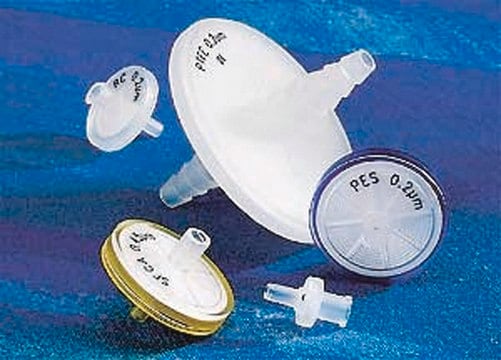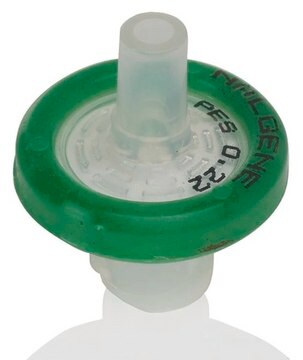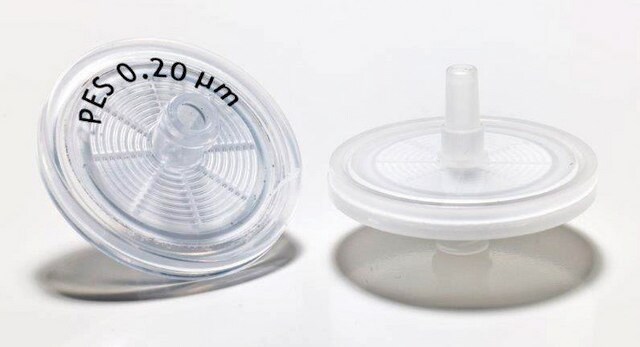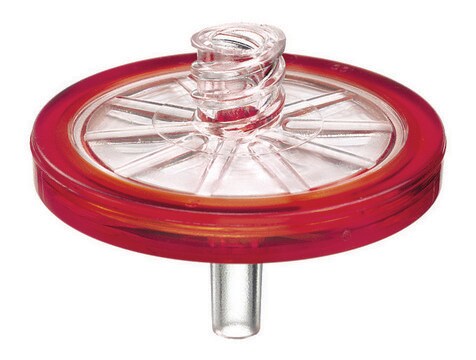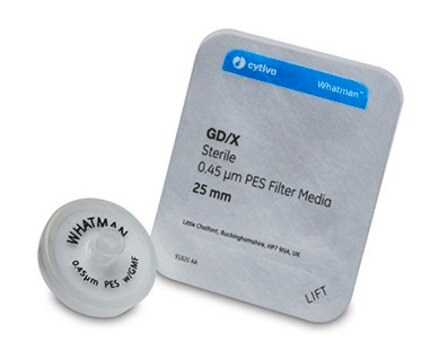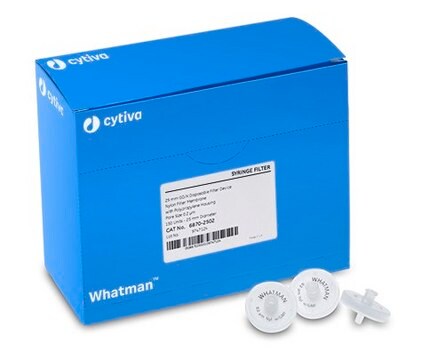CLS431219
Corning® syringe filters
cellulose acetate membrane (surfactant-free), diam. 28 mm, pore size 0.2 μm
Synonym(s):
disposable syringe filters, sterile syringe filters, syringe filters
About This Item
Recommended Products
material
acrylic copolymer housing
cellulose acetate membrane (surfactant-free)
sterility
sterile
packaging
case of 50
manufacturer/tradename
Corning 431219
diam.
28 mm
pore size
0.2 μm
fitting
female Luer inlet (lock)
male Luer outlet (slip)
Looking for similar products? Visit Product Comparison Guide
General description
PES for low protein binding and faster flow rates; surfactant-free cellulose acetate (SFCA) for the lowest protein binding; PTFE for chemical resistance; and regenerated cellulose (RC) the best choice for DMSO compatibility.
- SFCA-PF (surfactant-free cellulose acetate with prefilter) membranes provide the lowest protein binding and have an integral glass fiber prefilter for extra filtering capacity
- 100% integrity tested, sterile and certified nonpyrogenic and noncytotoxic
- Manufactured in accordance with ISO 9002 standards
Legal Information
Choose from one of the most recent versions:
Certificates of Analysis (COA)
It looks like we've run into a problem, but you can still download Certificates of Analysis from our Documents section.
If you need assistance, please contact Customer Support.
Already Own This Product?
Find documentation for the products that you have recently purchased in the Document Library.
Customers Also Viewed
Our team of scientists has experience in all areas of research including Life Science, Material Science, Chemical Synthesis, Chromatography, Analytical and many others.
Contact Technical Service